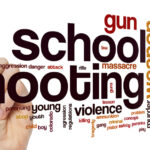Should Parents be Held Responsible for the Crimes of their Children?

James and Jennifer Crumbley, the parents of 15-year old Ethan Crumbley, who opened fire at Oxford High School in Michigan will face trial in the United States on charges of involuntary manslaughter, which carries a maximum penalty of 15 years in prison.
Ethan’s parents are not accused of knowing their son planned to kill fellow students at Oxford High School in 2021. But prosecutors said they made a gun accessible to their son, ignored his mental health needs and declined to take him home when confronted with his violent drawings at school on the day of the attack.
Agreed facts state that James Crumbley, bought a gun with Ethan just four days prior to the shooting. Jennifer Crumbley took Ethan to a shooting range and described the outing on Instagram as a “mom and son day.”
A day before the shooting, the school informed his Mother that Ethan, who was only 15 at the time, was looking at ammunition on his phone. “I’m not mad,” she texted him. “You have to learn not to get caught.”
American legal commentators say the case is a rare one – that parents are rarely brought to held account for the crimes of their children. And this poses an interesting question – should they be? And if that were the case, would we have less children incarcerated as a result?
New South Wales case
A recent case in New South Wales involving a brutal attack by three teenage girls on a 13-year old boy during a sleepover – tying him up, assaulting him, burning him with a cigarette lighter, curing his hair and shaving his eyebrows – led many parents to wonder how these young people could be left unsupervised for a period of time, which they feel may have contributed to such a prolonged attack being allowed to occur.
Helicopter parenting is not necessarily the answer – teens need a degree of privacy and freedom – so where can we lay the blame when something horrendous like this happens?
The answer is complex.
In New South Wales, children as young as ten years old can be held criminally responsible, although there are special considerations under the law for children aged between 10 -14 that reduces culpability and affects the types of penalties these young people face.
In 1997, the Children (Parental Responsibility) Act was passed into New South Wales law,
which allows a court to make various orders on the parents of a child who has committed an offence.
Among other things, parents may be ordered to attend court proceedings, provide an undertaking to comply with certain requirements, and to make a payment or promise known as a security to ensure the good behaviour of the child.
But the Act also creats an offence of wilful default or neglect by a parent that contributes to the commission of an offence.
That offence was repealed in 1997, but later reinstated by the Carr Government. It remains in place today.
Parents contributing to a child’s offences
Section 11 of the Children (Parental Responsibility) Act provides that:
(1) A parent who, by wilful default, has contributed directly or in a material respect to the commission of an offence of which the child has been found guilty, is guilty of an offence.
Maximum penalty: 10 penalty units (@110 each).
(2) The court may require a parent convicted of an offence under subsection (1) to undergo counselling or do such other things that would in the opinion of the court advance the welfare and best interests of the child instead of, or in addition to, imposing a penalty.
It’s not clear how many parents in NSW have been convicted of this offence. However, the law suggests, as in the case of US parents Jennifer and James Crumbley, there needs to be a strong body of evidence linking the parents to the crime the child has committed.
In the Crumbley case, the parents have pleaded not guilty and are expected to mount a defence. However, they have been in prison for two years already, unable to pay the $500,000 bond required for their bail. Ethan has been sentenced to life in prison after pleading guilty last December to murder, terrorism and other crimes.
Children behind bars across Australia
Last year almost, 500 children were sent to detention across Australia.
What we know about that number is that a disproportionate number of them are Aboriginal or Torres Strait Islanders.
What we also know is that it is often the most vulnerable and disadvantaged children who come into contact with the justice system at a young age – these are children who tend to come from socially and economically disadvantaged backgrounds, may have parents who are addicts, may be suffering learning disabilities, may be suffering from family abuse or domestic violence, neglect, may be being bullied themselves, or suffering other types of significant trauma that can be causing them mental and emotional distress, which leads them to offend.
In other words, there is a very strong, clear link between the maltreatment of children and youth offending.
None of this is new – experts who work with juvenile offenders often attest to the fact that there is almost always a reason that good kids turn ‘bad’. Sometimes it can be as simple as being influenced too heavily by their peers.
Research shows that young people don’t have fully developed cognitive functions, including sound judgement and impulse control. This can impact the decisions they make, because they’re not always fully aware of the risks or consequences of their behaviour.
In recent years, poverty and homelessness have become increasing factors behind the reasons why adolescents are behind bars.
During the 2019 – 2020 financial year, 236 highly vulnerable adolescents were locked up prior to being sentenced because they had nowhere else to go. In many instances, they had committed minor offences, such as theft and fare evasion.
And in these instances, there is a governmental responsibility.
It’s well documented that the NSW youth housing system is stretched to capacity and unable to cope with the number of young people who need a roof over their heads.
Socio-economic disadvantage
Most young people are not homeless by choice, although the consequences of finding themselves homeless at a young age can make it difficult for them to stay engaged with school, find jobs, get access to rental housing and maintain friendships.
More likely, they will experience depression, poor nutrition and illness. They may fall into substance abuse, they may end up becoming victims of street violence.
Without the right support, many will struggle with homelessness their entire lives and miss their chance to be productive members of society.
The good news is that psychologists generally agree that children and teens do have good chances of turning their lives around – irrespective of the crimes they commit – if they are given a combination of appropriate punishment, rehabilitation, and support so they can heal and begin to build their own lives.
This also provides further evidence to support the fact that when young people commit a criminal offence, we should avoid locking them up.
Yes, there need to be consequences, but there also needs to be tolerance, understanding and financial help available to help these young people so they can heal their childhoods and begin to build sustainable, healthy lives as they grow towards adulthood.
The US case may set a precedent for adult capability
The Crumbleys are the first parents to be charged in a mass U.S. school shooting. Certainly it indicates the prosecutors are feeling the pressure of community outrage after these tragic events — to hold someone accountable.
The charge of involuntary manslaughter in the US is defined as an unintentional killing that results either from recklessness or criminal negligence or results from a low-level criminal act such as a misdemeanor. Unlike other forms of homicide it does not require proof of deliberation or premeditation, or even intent.
In Australia, involuntary manslaughter is typically the result of unlawful and dangerous act and / or criminal negligence. The maximum penalty is 25 years in prison.
Australia’s strict gun laws prevent these types of mass school shootings, but given that youth crime is on the rise across a number of categories including violent crime, governments here too, are considering a range of options to deter youth crime and stop re-offending.
Unfortunately, in Australia we do tend to take a punitive approach which is not always the best option when it comes to helping kids turn their lives around.







